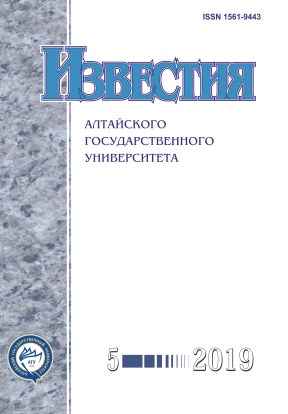Determining the Geographical Coordinates of Archaeological Sites by Using Old Maps
УДК 902.26 ББК 63.4
Abstract
The problem of high precision determining the coordinates of archaeological monuments arises in the process of analyzing the development of territories by the population in different historical periods. Maps that have more exact position of the objects provide results that are more accurate. Currently, this task is posed in general terms when constructing geographic information systems (GIS) of individual monuments, complexes of monuments or separate territories. Prior to this, archaeologists, in principle, did not have the task of compiling GIS and high-precision determination of coordinates. In solving this task, the main problem is the lack of information on the geographical coordinates of the objects, which is critical if the object itself does not exist in our time. An example is the territory of historical Khorezm, many of whose monuments were lost because of agricultural land development.
It is possible to get the coordinates of the absent monuments by using satellite images of the late 1960-1970s; however, the object under study should be clearly visible from space. If the monument is poorly preserved, the only way to determine its geographical coordinates is to use archaeological maps drawn up, for example, by the Khorezm expedition.
The main idea is that if we determine the local coordinates of monuments that do not exist in our time relative to the monuments that have preserved to our time (we shall call them reference objects), then knowing the modern geographical coordinates of reference objects, we can find the coordinates of non-existing objects. The precision of evaluation of the coordinates is determined by accuracy of the compiled archaeological maps. Therefore, the problem arises of determining the geographical coordinates of the monuments with the greatest possible accuracy using archaeological maps.
Downloads
Metrics
References
Толстов С.П. По следам древнехорезмийской цивилизации. М. ; Л., 1948.
Толстов С.П. По древним дельтам Окса и Яскарта. М., 1962.
Калалы-гыр-2. Культовый центр в Древнем Хорезме IV-II вв. до н. э. / отв. ред. Б. И. Вайнберг. М., 2004.
Древности Южного Хорезма / отв. ред. М. А. Итина. М., 1991.
Толстов С.П. Древний Хорезм. Опыт историко-археологического исследования. М., 1948.
Андрианов Б. В. Древние оросительные системы Приаралья. М., 1969.
Неразик Е.Е. Сельские поселения афригидского Хорезма. М., 1966.
Неразик Е.Е. Формирование раннесредневекового общества в низовьях Амударьи. М., 2013.
Колганова Г.Ю., Никифоров М.Г., Рейджс В. Архео-астрономические исследования древнехорезмийского комплекса Кой-Крылган-кала // Восток (Oriens). № 4. М., 2014.
Кой-Крылган-кала - памятник культуры древнего Хорезма IV в до н. э. - IV в н. э. // Труды Хорезмской археолого-этнографической экспедиции. Т. V / отв. ред. С. П. Толстов, Б.И. Вайнберг. М., 1967.
Болелов С.Б., Колганова Г.Ю., Никифоров М.Г. Элементы гармонизации в архитектуре памятника Кой-Крылган-кала // Краткие сообщения Института археологии. Вып. 237. М., 2015.
Izvestiya of Altai State University is a golden publisher, as we allow self-archiving, but most importantly we are fully transparent about your rights.
Authors may present and discuss their findings ahead of publication: at biological or scientific conferences, on preprint servers, in public databases, and in blogs, wikis, tweets, and other informal communication channels.
Izvestiya of Altai State University allows authors to deposit manuscripts (currently under review or those for intended submission to Izvestiya of Altai State University) in non-commercial, pre-print servers such as ArXiv.
Authors who publish with this journal agree to the following terms:
- Authors retain copyright and grant the journal right of first publication with the work simultaneously licensed under a Creative Commons Attribution License (CC BY 4.0) that allows others to share the work with an acknowledgement of the work's authorship and initial publication in this journal.
- Authors are able to enter into separate, additional contractual arrangements for the non-exclusive distribution of the journal's published version of the work (e.g., post it to an institutional repository or publish it in a book), with an acknowledgement of its initial publication in this journal.
- Authors are permitted and encouraged to post their work online (e.g., in institutional repositories or on their website) prior to and during the submission process, as it can lead to productive exchanges, as well as earlier and greater citation of published work (See The Effect of Open Access).








